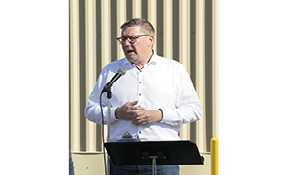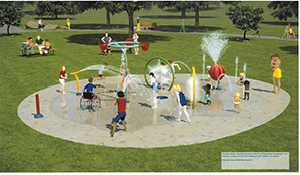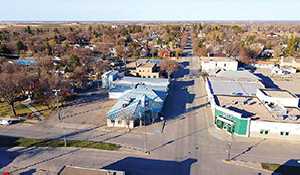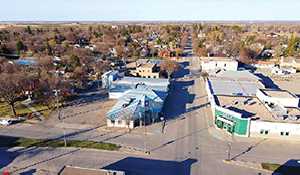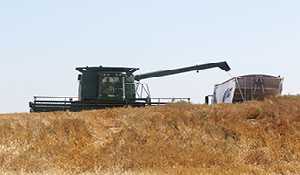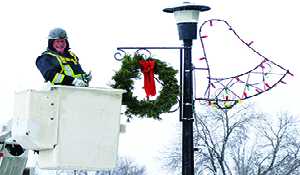Sask. Party leader discusses rural issues including hospitals, connectivity, and water
October 20, 2020, 9:04 am
Brian Zinchuk, Local Journalism Initiative reporter
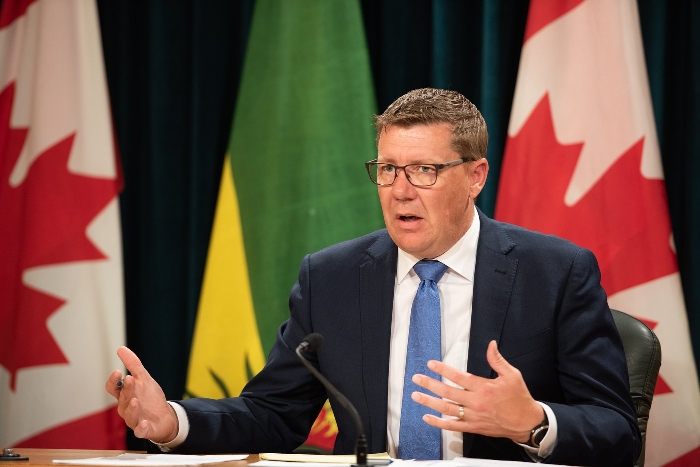

This is one of a series of six interviews with the six party leaders in Saskatchewan leading up to the provincial election.
Saskatchewan Party Leader Scott Moe spoke of increasing rural connectivity, water security and value-added agriculture through irrigation infrastructure, and training more doctors in response to a series of questions on rural issues in this election.
Between Oct. 16 and Oct 19, all six party leaders were asked the same set of five questions focusing on issues facing rural Saskatchewan. Moe responded by phone from Shellbrook on Oct. 17.
Municipal Infrastructure
Asked about the infrastructure deficit facing rural municipalities and towns, given depopulation is a continuing trend, Moe said, “We need to continue to work with our municipal partners, rural, small cities, towns and villages on partnering with the federal government on our infrastructure plan in which we’ve enhanced a large portion of that just this past year. We’ve also introduced programs such as municipal roads for the economy as well as the urban connector programs.”
He noted this last summer, facing COVID-19, the province advanced its revenue sharing funds up front, and added to the municipal enhancement fund by $150 million. “We advanced that to municipalities so that they didn't have to make a choice between moving forward with their infrastructure plans for this year and in keeping their balance. We wanted to ensure that their infrastructure projects continue to move forward so that we can continue to foster that economic recovery in our communities. So revenue sharing is unprecedented, funding to municipalities continues. (The) municipal economic enhancement program is absolutely unprecedented funding provided this year.”
He noted the major cost-shared program with the federal government and municipalities “makes sure that we’re always building on the infrastructure deficit that we have.”
Keeping agriculture a priority
With the continuing trend toward fewer rural residents, what will the Saskatchewan Party do, if elected, to ensure agriculture remains a priority for the government? Moe responded, “I would say the number of farmers actual farmers is decreasing in the province, (but) the number of people that are employed in the agriculture industry most certainly is not.”
He pointed to on-farm employment, value-added industry and the farm service industry as examples. “It is always going to be an important piece, an important industry for the government to focus on, and I would say it’s the spinal cord of the Saskatchewan economy.”
Moe said that just prior to the election, the government announced the opening of three additional trade offices, in Singapore, India and Japan. Agriculture is one of their main focuses.
“We're going to continue down that path of engaging, on our market access, so that we can protect the market share that we have for agri-food products in this market but also open up new opportunities,” he said.
They are also seeking investment in Saskatchewan agri-production. Moe noted an intention to “change the products that we're growing so, that we're shipping canola oil rather than canola seed, for example, and climbing that value chain.”
He referred to the announcement this past summer of a $4 billion irrigation expansion in central Saskatchewan over the next ten years.
“This will drastically change which crops are being grown in that area. It will also drastically change the investment attraction opportunities that are there, to likely process different crops that will be grown in the area where irrigation is taking place, but also provide water security for those other value-added agriculture industries, to really know that they have the stability to set up shop here.”
Moe gave the examples of canola crushing plants and potash mines.
Indeed, he said this investment is far larger than a few farmers or the value-added industry. He noted that for Saskatoon, Belle Plaine, Moose Jaw and Regina areas, “The irrigation channel project that we're looking at goes far beyond simply agriculture. It provides opportunities and value-added agriculture. It provides opportunities in other industries that will provide a growth of the jobs in our population. It also provides water security for people living down in the municipalities, Moose Jaw, Regina and all along the routes.”
Bolstering rural healthcare
With regards to keeping rural emergency rooms open and having sufficient doctors in rural facilities, like Preeceville, Moe said, “We put a couple of initiatives in place to try to help with those challenges. One is a rural local doctor that will provide some supports, as well as trying to centralize some of the doctor pools you can rely, have some efficiencies of scale in the services so you don't rely on one or two physicians to run the entire emergency centre.”
He said the scope of practice of nurse practitioners has been expanded and they’ve been integrated into the rural health care model, but there’s work to do.
“We do have 900 more physicians working in the province than we did when we formed government. We do have 4,000 more nurses working in the province and we did when we formed government. But we need a few more. Preeceville is an example of where we have had some challenges recruiting health care professionals into that area. But I would say, almost adding the work that needs to be done, we have far fewer of these challenges than we did a decade ago.”
He noted that under the NDP, virtually every community was looking for physicians around the world, but substantial changes have since been made. One of those was to increase the number of doctors training seats at the University of Saskatchewan six or seven years ago, from 60 to 100 per year, and residencies from 60 to 120. Just now, that is starting to pay dividends as those doctors finish school.
“We expanded those seats a number of years ago, six, seven years ago, and it takes about six to seven years to get through the program. So we're just starting to see the increase of those graduates today from the investment that was made close to a decade ago,” Moe said.
Rural connectivity
With internet access still painfully slow in for substantial portions of rural Saskatchewan, amplified by the need of children to do school work from home during the pandemic, how would they improve rural connectivity? Moe said, “There needs to be an investment,” noting this is one of the applications the province made to the federal government through infrastructure programs.
He noted it’s not only important for youth, for schooling and post-secondary, but also for agriculture and rural businesses. “The need for access the internet access in order to function for those businesses, it just is absolutely paramount and we need to continue building out our data. We have put, SaskTel has put hundreds of millions of dollars into that out-build, and needs to be more,” Moe said.
Improving rural environment and water quality
Moe pointed to the new irrigation plan which will increase water security for Moose Jaw and Regina, and increase water flow through the Buffalo Pound and Qu’Appelle system, as well as water quality there. “In addition to that, we need to continue with our work that began a few years ago on ag water management to ensure that we are flowing water into our systems, and are able to control that.
“I've always said that responsible water management is where Saskatchewan needs to get to and we continue to embark on that process. There's more work to do on it. But we are we are finding our way on ensuring that we can control the flow of our water off our agricultural and rural lands in a way that allows us, one, to farm that land, but two, so that we can protect those downstream, so that we can actually hold on to that water downstream capacity isn’t there so responsible water management also has to be part of this, and part of that is also the outbuild of irrigation infrastructure, particularly through the Buffalo Pound-Qu’Appelle chain.”













